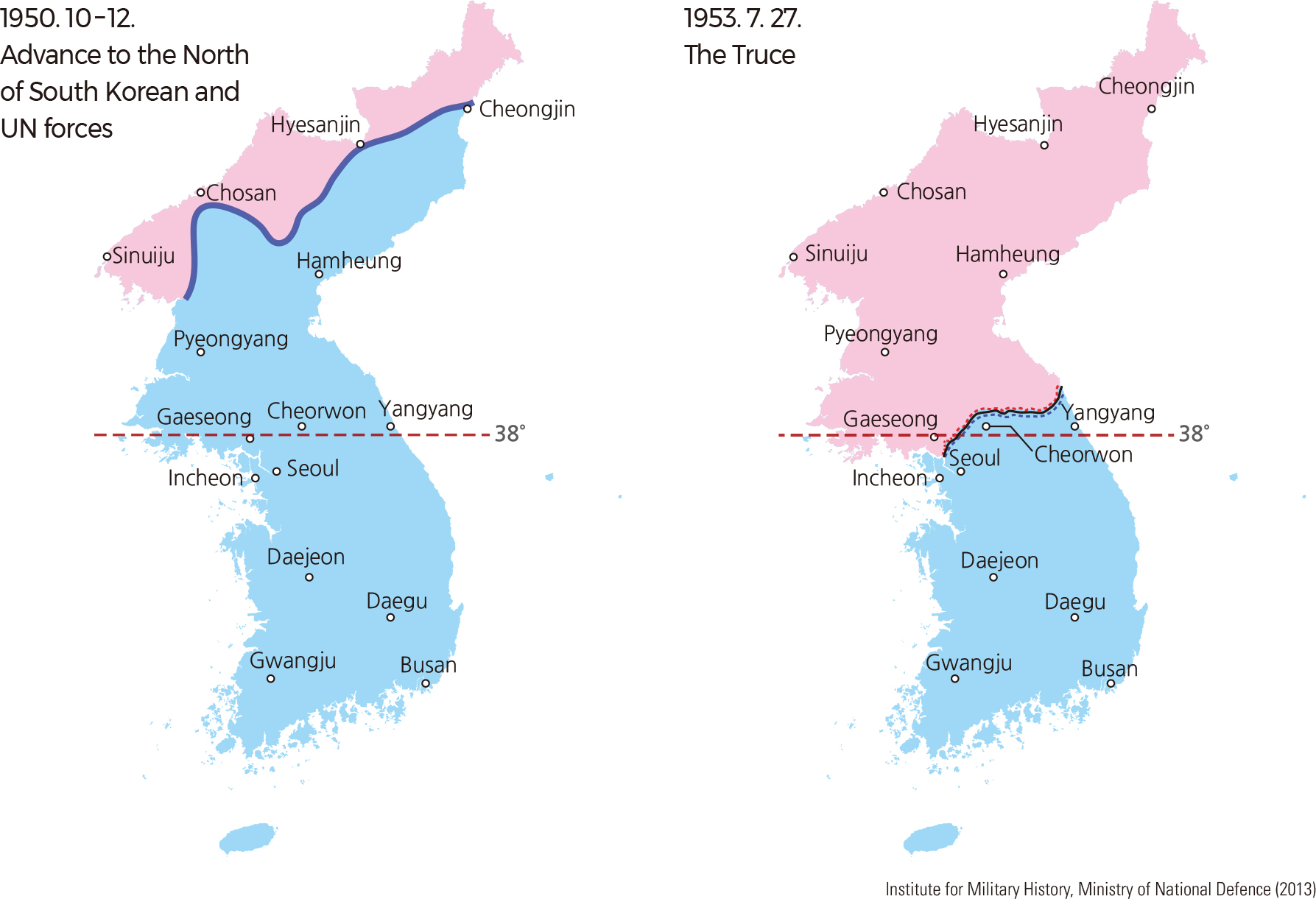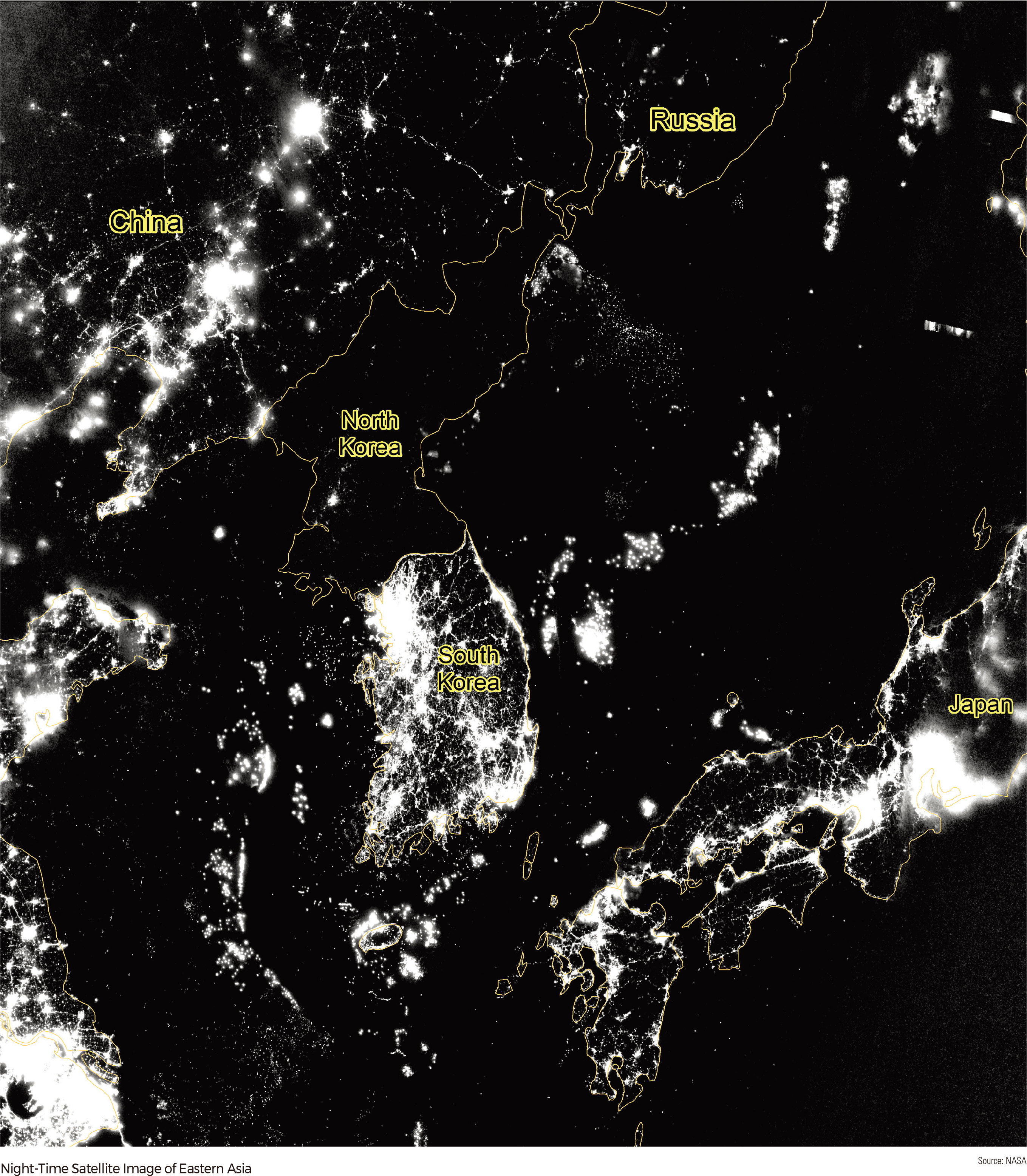Comprehensive Edition 2022
For many students learning about Korea, one of the most pressing questions is about the history of the division between North and South Korea. A nighttime image (at right) shows the stark contrast in the degree of development between North and South Korea.
After World War II, Korea was divided into North and South along the 38th parallel (the line of latitude 38 degrees north of the equator). Korea then suffered a tragic war, the Korean War (1950〝1953). A truce line near the 38th parallel has separated the two Koreas ever since. Although there have been competition and tension between the two Koreas, there have also been many sincere efforts to overcome the division with trust-building events, such as holding reunions for separated families, inter-Korean meetings, and cooperative economic endeavors.
The Demilitarized Zone (DMZ) is a 4-km wide buffer zone along the border between North and South Korea where military activities are not allowed. The area is off-limits to civilians and so is uninhabited. Just outside the zone, the borders are heavily guarded. Because the DMZ is almost untouched by human activity, it hosts a pristine and diverse natural ecosystem that is unique in the world. The zone serves as home to many endangered plant and animal species, such as the Asiatic black bear.
Korea at Night
This satellite image shows the east Asia region at night as it appears from space. The white areas are well lighted since they have more people, more buildings, and more electricity use. South Korea, Japan, and much of China are well-lit by street lights, buildings, houses, signs, automobiles, and manufacturing facilities. There are also many lights coming from certain areas in the oceans; these lights are from fishing vessels in search of squid, shrimp, or fish. The fishing boats combine to light up almost as much area as the cities on the mainland of South Korea.
North Korea, in contrast, appears almost completely black. Only the capital city of North Korea, Pyongyang, appears as a small white blur. North Korea uses only a fraction of the electricity that is used in South Korea, so there are many fewer lights. On average, a North Korean uses less than one-tenth of the electricity a South Korean uses. Ever since Korea’s division into two countries, South Korea has grown from one of the poorest nations in the world to become an economic powerhouse. Many new buildings, factories, apartments, roads, and commercial areas have been built up as urban areas have expanded with the new economic growth. Meanwhile, North Korea has remained largely agricultural and has not had the same level of development. The satellite image of Korea at night vividly conveys the stark contrast in economic prosperity between the two Koreas. |



